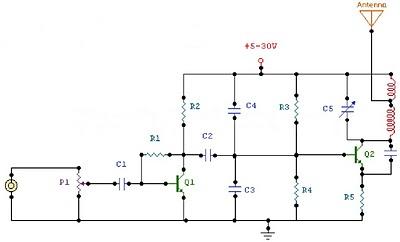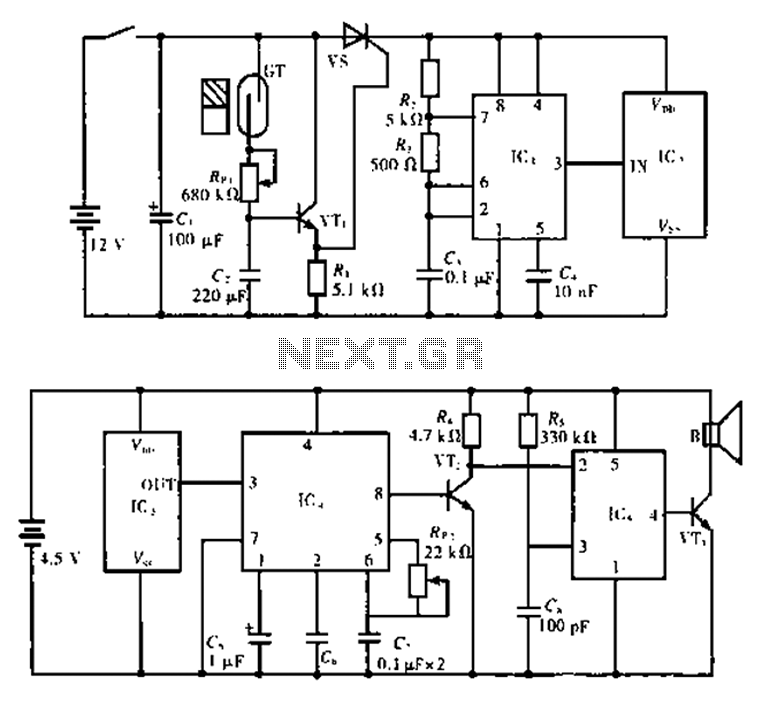
Single chip FM transmitter circuit using IC MAX 2606

A simple single-chip FM transmitter circuit with a diagram and schematic using the IC MAX 2606, which is a high-performance voltage-controlled oscillator (VCO).
The FM transmitter circuit utilizing the MAX 2606 is designed for efficient frequency modulation of audio signals. The MAX 2606 is a versatile integrated circuit that functions as a voltage-controlled oscillator, allowing for precise control over the output frequency based on the input voltage. This characteristic makes it suitable for applications requiring stable frequency generation.
In the schematic, the circuit typically includes the following key components: the MAX 2606 IC, a power supply, audio input, and an antenna. The power supply provides the necessary voltage for the operation of the circuit, while the audio input can be connected to various audio sources such as microphones or audio players. The output from the MAX 2606 is fed to an antenna, which broadcasts the modulated signal over a designated frequency range.
To ensure optimal performance, it is essential to properly configure the external components connected to the MAX 2606. These components may include resistors and capacitors that determine the modulation index and frequency stability. Additionally, careful consideration must be given to the layout of the circuit to minimize interference and enhance signal quality.
Overall, this FM transmitter circuit is an effective solution for short-range audio broadcasting, offering simplicity in design and functionality.A simple Single chip FM transmitter circuit with diagram and schematic using IC MAX 2606, which is a high performance Voltage controlled oscillator or VCO.. 🔗 External reference
The FM transmitter circuit utilizing the MAX 2606 is designed for efficient frequency modulation of audio signals. The MAX 2606 is a versatile integrated circuit that functions as a voltage-controlled oscillator, allowing for precise control over the output frequency based on the input voltage. This characteristic makes it suitable for applications requiring stable frequency generation.
In the schematic, the circuit typically includes the following key components: the MAX 2606 IC, a power supply, audio input, and an antenna. The power supply provides the necessary voltage for the operation of the circuit, while the audio input can be connected to various audio sources such as microphones or audio players. The output from the MAX 2606 is fed to an antenna, which broadcasts the modulated signal over a designated frequency range.
To ensure optimal performance, it is essential to properly configure the external components connected to the MAX 2606. These components may include resistors and capacitors that determine the modulation index and frequency stability. Additionally, careful consideration must be given to the layout of the circuit to minimize interference and enhance signal quality.
Overall, this FM transmitter circuit is an effective solution for short-range audio broadcasting, offering simplicity in design and functionality.A simple Single chip FM transmitter circuit with diagram and schematic using IC MAX 2606, which is a high performance Voltage controlled oscillator or VCO.. 🔗 External reference





